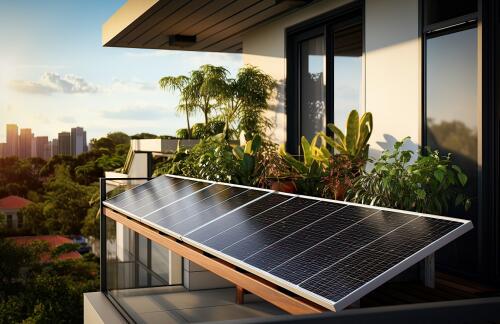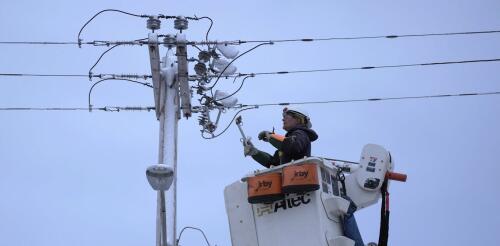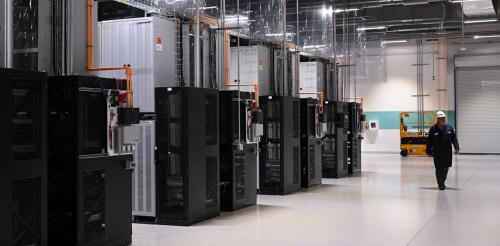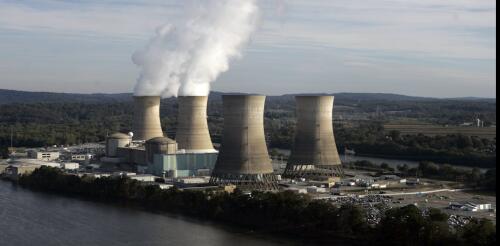Electricity
This new wave of solar producers aren’t just getting cheap electricity, they’re also participating in the energy transition. More than 400,000 plug-in solar systems have been installed in Germany, most of them taking up a seamless spot on people’s balconies. New data shows at least 50,000 of the PV devices were added in the first quarter of 2024 alone. A boom born from Germany’s “very strong solar culture”, in the words of one expert. Solar balconies are a piece of the wider energy transition across Europe, explains Jan Osenberg, a policy advisor at the SolarPower Europe association. “We see them as a subset of rooftop solar, but also as something different,” he tells Euronews Green. “We basically see it as a trend to use all possible artificial infrastructure for solar generation.” Train tracks, motorways, carparks, car roofs, cemeteries and building facades… the list...
Frustration with electric utilities is universal today. Whether it’s concerns over high rates, poor service or a combination of both, people are constantly looking for a better answer to the systems that serve them. In the Nov. 7, 2023, election, voters in Maine had a chance to consider a new model for electricity service that would replace the state’s two widely unpopular private utilities, but they balked in the face of multibillion-dollar cost projections. This decision took the form of two ballot questions. Question 3 asked whether voters wanted to create a new publicly owned power company, dubbed Pine Tree Power, to take over the existing assets of Maine’s two privately owned utilities. The related Question 1 asked whether consumer-owned electric utilities should have to get public approval before taking on more than US$1 billion in debt. Voters adopted Question 1 and soundly defeated Question 3. Municipal ownership of utilities is not new: Across the U....
After nearly two decades of stagnation, U.S. electricity demand is surging, driven by growing numbers of electric cars, data centers and air conditioners in a warming climate. But traditional power plants that generate electricity from coal, natural gas or nuclear energy are retiring faster than new ones are being built in this country. Most new supply is coming from wind and solar farms, whose output varies with the weather. That’s left power companies seeking new ways to balance supply and demand. One option they’re turning to is virtual power plants. These aren’t massive facilities generating electricity at a single site. Rather, they are aggregations of electricity producers, consumers and storers – collectively known as distributed energy resources – that grid managers can call on as needed. Some of these sources, such as batteries, may deliver stored electric power. Others may be big electricity consumers, such as factories, whose owners ha...
Constellation, an energy company that provides electricity and natural gas to customers in 16 states and Washington, announced on Sept. 20, 2024, that it plans to restore and restart Unit 1 at Three Mile Island, a nuclear plant near Middletown, Pennsylvania, that was shut down in 2019. Microsoft has signed a 20-year agreement to purchase electricity generated by the plant to offset power demand from its data centers in the mid-Atlantic region. Three Mile Island was the site in 1979 of a partial meltdown at the plant’s Unit 2 reactor. The Nuclear Regulatory Commission calls this event “the most serious accident in U.S. commercial nuclear power plant operating history,” although only small amounts of radiation were released, and no health effects on plant workers or the public were detected. Unit 1 was not affected by the accident. University of Michigan nuclear engineering professor Todd Allen explains what restarting Unit 1 will involve, and why some other shu...
Hurricane Helene cut power to more than 4 million homes and businesses as it moved across the Southeast after hitting Florida’s Big Bend region as a powerful Category 4 storm on Sept. 26, 2024. As Helene’s rains moved into the mountains, causing devastating flooding, officials warned that fixing downed utility lines and restoring power would take days to weeks. Electricity is essential to just about everyone – rich and poor, old and young. Yet, when severe storms strike, socioeconomically disadvantaged communities often wait longest to recover. That isn’t just a perception. We analyzed data from over 15 million consumers in 588 U.S. counties who lost power when hurricanes made landfall between January 2017 and October 2020. The results show that poorer communities did indeed wait longer for the lights to go back on. A 10 percentile drop in socioeconomic status in the Centers for Disease Control and Prevention’s social vulnerability index was assoc...




